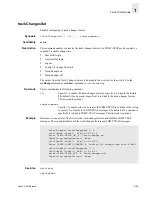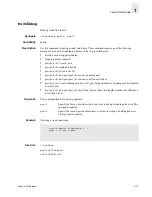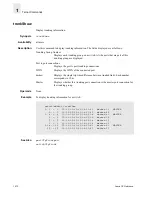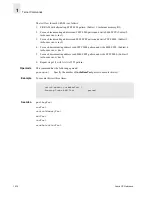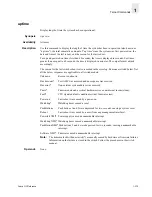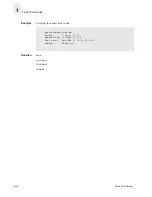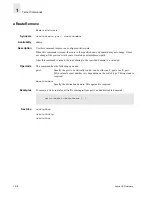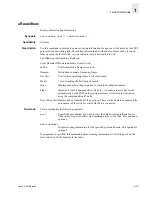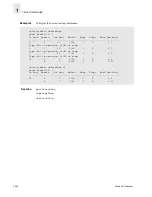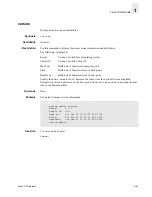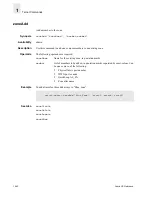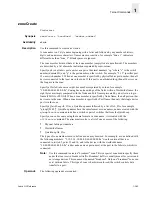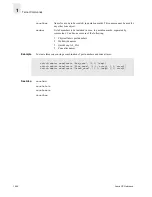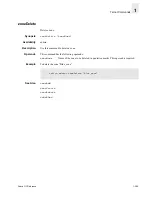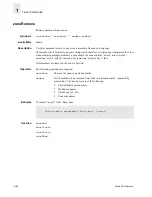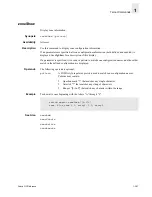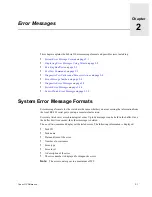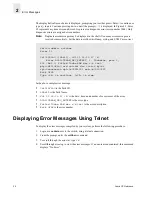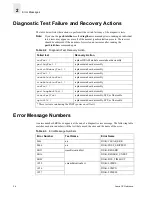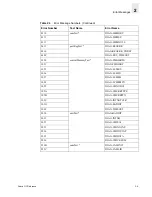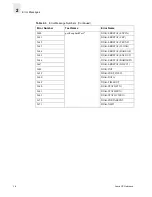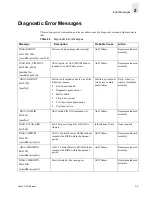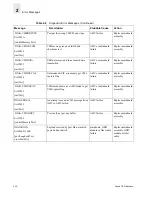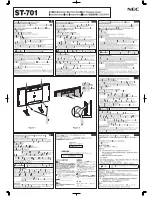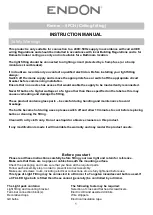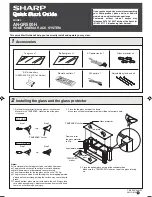
Fabric OS Reference
1-283
Telnet Commands
1
zoneCreate
Create a zone.
Synopsis
zoneCreate "zoneName", "member;member"
Availability
admin
Description
Use this command to create a new zone.
A zone name is a C-style name beginning with a letter and followed by any number of letters,
digits, and underscore characters. Names are case sensitive, for example “Zone_1” indicates a
different zone than “zone_1”. Blank spaces are ignored.
The zone member list must have at least one member (empty lists are not allowed). The members
are described by a list of member definitions separated by semi-colons.
Specify a physical fabric port number as a pair of decimal numbers “s,p” where “s” is the switch
number (domain ID) and “p” is the port number on that switch. For example, “2,12” specifies port
12 on switch number 2. When a zone member is specified by physical fabric port number, then all
devices connected to that port are in the zone. If this port is an arbitrated loop, then all devices on
the loop are in the zone.
Specify a Worldwide name as eight hex numbers separated by colons, for example
“10:00:00:60:69:00:00:8a”. Zoning has no knowledge of the fields within a Worldwide Name; the
eight bytes are simply compared with the Node and Port Names presented by a device in a login
frame (FLOGI or PLOGI). When a zone member is specified by Node Name, then all ports on that
device are in the zone. When a zone member is specified by Port Name, then only that single device
port is in the zone.
Specify a QuickLoop AL_PA as a QuickLoop name followed by a list of AL_PAs, for example
“qloop1[01,02]”. QuickLoop names have the same format as zone names, and are created with the
qloopCreate
command to define a switch or pair of switches that form the QuickLoop.
Specify a zone alias name using the same format as a zone name; it is created with the
aliCreate
command. The alias must resolve to a list of one or more of the following:
•
Physical fabric port numbers
•
Worldwide Names
•
QuickLoop AL_PAs
The types of zone members used to define a zone may be mixed. For example, a zone defined with
the following members: “2,12; 2,14; 10:00:00:60:69:00:00:8a” would contain all devices
connected to switch 2, ports 12 and 14, and to the device with the worldwide name
“10:00:00:60:69:00:00:8a” (either node name or port name), at the port in the fabric to which it is
connected.
Note:
Use this command to create a "broadcast" zone. This is a special zone used to specify those
nodes that can receive broadcast traffic. Broadcast traffic is usually meant for servers and
not storage devices. This zone must be named "broadcast". Only one "broadcast" zone can
exist within a fabric. This type of zone is hardware enforced; the switch controls data
transfer to a port.
Operands
The following operands are required:
Summary of Contents for StorageWorks 8B - FC Entry Switch
Page 1: ...reference manual version 3 0 fabric os www hp com ...
Page 14: ...xiv Fabric OS Reference ...
Page 189: ...Fabric OS Reference 1 175 Telnet Commands 1 portCfgLongDistance portCfgTrunkport portCfgSpeed ...
Page 302: ...1 288 Fabric OS Reference Telnet Commands 1 ...
Page 342: ...Index 4 Fabric OS Reference ...

